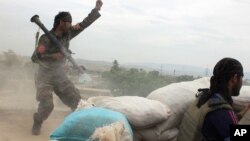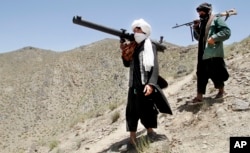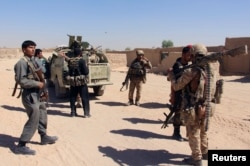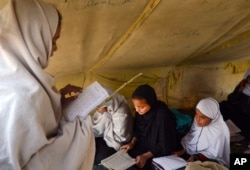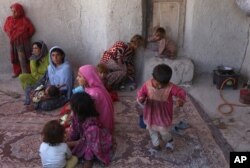The United Nations says the war in Afghan has caused more than 8,000 civilian casualties, including nearly 2,600 deaths, in the first nine months of 2016.
The U.N. Assistance Mission in Afghanistan, UNAMA, while releasing the casualty toll Wednesday, renewed its call for all parties to the conflict to prevent harm to civilians. The Mission said it has been deeply concerned by the continuing increase in child casualties since 2013.
Child casualties
"In the first nine months of 2016, UNAMA documented 2,461 child casualties [639 deaths and 1,822 injured], a 15 percent increase on the same period in 2015. Ground engagements caused more than half of all child casualties in 2016.”
The report blamed Taliban-led anti-government forces for causing 61 percent of all civilian casualties.
“While this represents a 12 percent decrease from the same period in 2015, UNAMA continues to document anti-government elements perpetrating illegal and indiscriminate attacks, as well as deliberate targeting of civilians,” the agency warned.
Fighting against insurgents
Fighting between Afghan forces and insurgents has again been cited as the leading cause of civilian casualties, showing an 18 percent increase this year. Suicide and complex insurgent attacks, and improvised explosive devices or IEDs are cited as other major causes.
The report noted a 72 percent increase in civilian casualties from aerial strikes by pro-government forces this year, saying one third of these were caused by international military forces. There were more than 11,000 conflict-related civilian casualties in 2015, marking the highest number of casualties since 2009 when UNAMA began documenting them. The conflict has since intensified, with Taliban insurgents expanding their activities to many more Afghan provinces this year.
The Afghan war is estimated to have caused 70,000 civilian casualties, including over 25,000 deaths since the counting began seven years ago.
Plea to better protection of civilians
“Increased fighting in densely populated areas makes it imperative for parties to take immediate steps to ensure all feasible precautions are being taken to spare civilians from harm,” said UNAMA Chief Tadamichi Yamamoto.
The report accused pro-government Afghan forces of causing 23 percent of all civilian casualties, noting a 42 percent increase compared to last year, primarily due to the use of indirect and explosive weapons and aerial attacks.
UNAMA added it was unable to ascertain responsibility for eleven percent of civilian casualties which resulted from the ground fighting in the first three quarters of 2016. The majority of the remaining casualties, it stated, were caused by “unattributed unexploded ordinance.”
“There is an urgent need for the government to implement the National Civilian Casualty Prevention and Mitigation policy and for anti-government elements to cease the use of indiscriminate and illegal devices and tactics,” said Yamamoto.
U.N. officials are also worried over the rising number of civilian displacements the conflict has caused this year. They have warned more than a million Afghans will be on the move by end of 2016, including tens of thousands of Afghan refugees returning mostly from neighboring Pakistan. The total number of the returnees has exceeded 400,000 since the start of the year, according to U.N. estimates.




